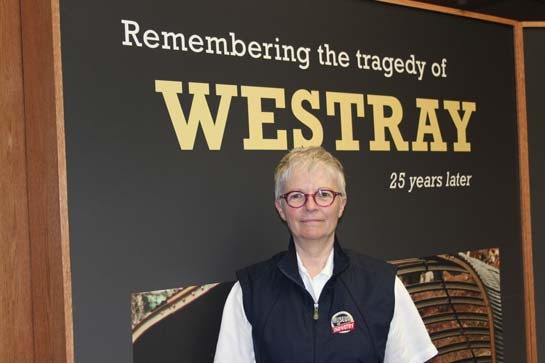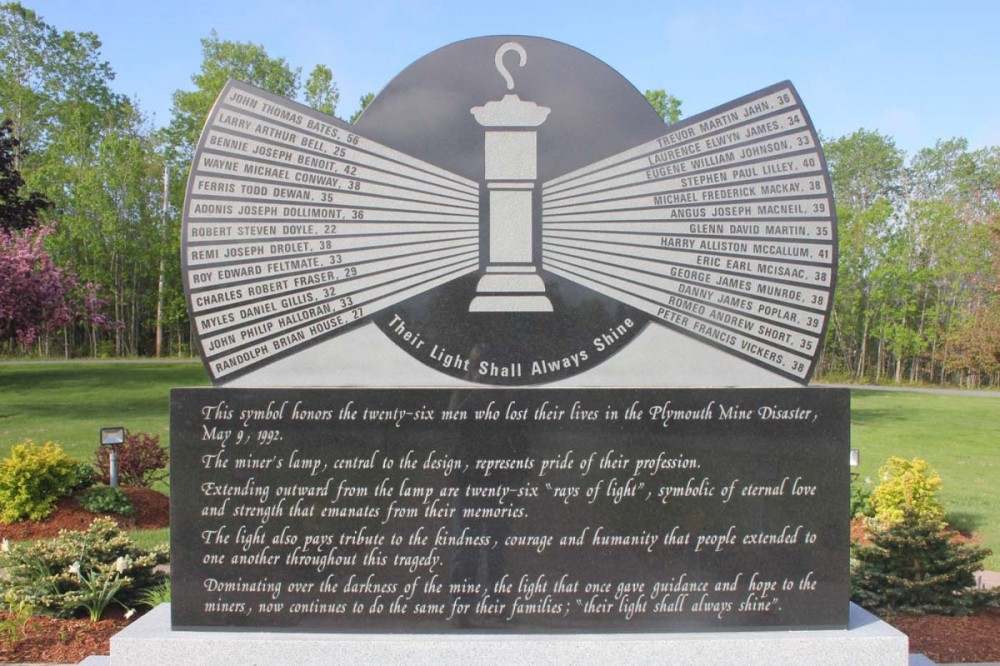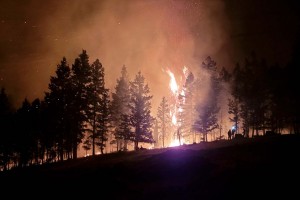On May 9 this year in Pictou County, Nova Scotia, we gathered together to honour the 26 miners who lost their lives in 1992 when the Westray mine exploded in Plymouth in the early hours of the morning. Twenty-five years later, people in Pictou County and across Canada were reminded of the burden of sorrow carried by coal mining communities everywhere. We share a heritage of lasting grief: of bodies damaged and lives lost doing dangerous work underground. We also share a history of community connection.
On this 25th anniversary, the pain caused by the Westray Mining Disaster to individuals, families and communities re-surfaced — of course, not at all as acutely as on the morning the explosion occurred, but still, the sorrow lives on. Feelings of community also returned as we remembered the generosity and kindness of neighbours, and strangers from near and far, that helped families cope with their grief and their outrage back in 1992.
Even though the Westray anniversary is always very specific and personal, we know it is also part of a continuum of shared experience. Accidents — and negligence — have caused death and destruction throughout the history of Nova Scotia coal mining. Time and time again the earth shook, a whistle blew, draegermen rushed to help, a doctor and clergy were summoned to the pithead, and wives waited to hear if they were widows.
And so, on the Westray anniversary, we symbolically grab hold of a thread that reaches back through time, connecting us to others who were injured or died on the job. The thread joins us to a time, still in living memory, when 19 of the best men of the McGregor Mine, here in Stellarton, lost their lives in a methane explosion. Reaching back further, we arrive at June 11, 1925 — yet another time when a coal company, driven by corporate greed, severely mistreated its workers in the name of profit.

By choosing June 11, Davis Day, to remember coal miners who died on the job, we focus on one of the darkest days in Nova Scotia coal mining history: a day company police shot a miner dead.
Ninety-two years ago, striking coal miners in Cape Breton were pushed to desperation by a coal company that had cut off their access to water and electricity, after withholding access to the primary food supply for mining families — the company-owned stores.
The miners marched 16 kilometres, from Glace Bay to New Waterford, in an attempt to restore power and water (for those of you in Pictou County, that is like walking from Stellarton to the Pictou waterfront). Along the route, they had to pass by a machine gun trained on them by company police, who were perched on the steps of a church on a hill overlooking the march. Ignoring the threat, miners, mine workers and their supporters walked on.

Debra Mcnabb, Director Of The Museum Of Industry In Stellarton, Nova Scotia, Grew Up In Glace Bay, Cape Breton. PHOTOGRAPH: LORRAINE ENDICOTT
When they reached New Waterford, they were joined by others. An estimated 700 to 3,000 people marched onward to the power plant just outside of town at Waterford Lake. When they arrived, company police fired at the unarmed protesters, killing 37-year-old William Davis, and wounding others. Bill Davis and his wife had nine children and a 10th on the way. He was known as a skilled worker, active in his union, and had come from the mines of Springhill.
Davis was given the largest funeral the Town of New Waterford had ever seen, and his death became a symbol of the determination and resilience of the miners in their struggles. At a union convention later that year, June 11 was declared Davis Day. Miners vowed they would never work on June 11, and for many years this was the case. Instead, parades, union speeches, and memorials filled the day. Stellarton miners had been part of that bitter 1925 strike in Cape Breton, and Stellarton joined in the annual commemoration in 1938.
District 26 of the United Mine Workers of America, the local union for Cape Breton and Pictou County coal mines, did much over the years to keep the day of remembrance going. Here in Stellarton, we know coal miners' families worked hard to ensure an annual ceremony continued to be held here. In 2008, the Province of Nova Scotia formalized this commemoration by proclaiming An Act Respecting a Memorial Day to Honour Miners (Bill No. 189: William Davis Miners' Memorial Day Act).
And now we stand here in Nova Scotia's first coal town — Albion Mines (what Stellarton used to be called). It was right here that an English coal mining company arrived in 1827. They brought skilled British miners to the quiet countryside, as well as the latest technology and the means to go deep into the earth to extract coal.
This arrival established coal mining as an industry in Nova Scotia. Right behind us here were the first pits they dug; right behind us were the first mine fatalities.
Those of us gathered here today can only try to understand the struggles and hardships faced by those early residents of Albion Mines, and of Nova Scotia coal mining families across the generations. We can know the tally of deaths by studying monuments such as the one behind me, and by reading and listening to accounts of injuries and loss of life at the Foord Pit, the Allan Shaft, the McGregor, Westray. We can be shocked by the deprivation experienced: the wealth derived from Nova Scotia coal was not shared with the miners and their families, but instead lined the pockets of companies and individuals living far from here.
We can learn that miners did not passively accept this treatment. They organized into unions, went on strike several times, won and lost. Sometimes they became militant and burned company stores; sometimes they found ways to build their own homes to escape the grip of the company.

Company houses from mining days still line the streets of Stellarton, Nova Scotia. PHOTOGRAPH: LORRAINE ENDICOTT
There were grim times and there were happy times. Explosions and bumps. Miners built churches and hospitals. They and their wives worked hard and played hard. There were parties and dances, bootleggers and prayers, practical jokes, camaraderie, nicknames.
With few active mines left, much is gone now from once proud Nova Scotia coal towns such as Stellarton, and Westville. But what remains is the foundation of a coal mining culture.
Miners were a close-knit bunch — their very lives could depend on the actions of their buddies in the mine. Fun was cultivated for its own sake and as a way to cope with hardship. Sticking together in common struggle, and sharing the good times, was the glue that held Nova Scotia's coal towns together. That is our inheritance today, and that is why we should pause on June 11 to reflect and remember, to commemorate and to celebrate.
This article is based on the talk she gave at the Stellarton commemoration of Davis Day, on June 11, 2017. The museum has a standing exhibit about the Westray tragedy, called "Coal and Grit." Its stunning feature exhibit, "Remembering the Tragedy of Westray 25 Years Later," was held in 2017.
There are at least two excellent books about the history of coal miners organizing in Cape Breton against terrible working and living conditions: J.B. McLachlan: A Biography: The Story of a Legendary Labour Leader and the Cape Breton Coal Miners, by labour historian David Frank; and The Company Store: J. B. McLachlan and the Cape Breton Coal Miners 1900-1925.
See, as well, the United Steelworkers' book Hell's History, which highlights the need for better enforcement of the Westray Bill. Last but not least, watch the National Film Board's documentary, Westray.
Debra McNabb is the director of the Museum of Industry, in Stellarton, Nova Scotia. McNabb is from Glace Bay. Her grandfather was a coal miner.















